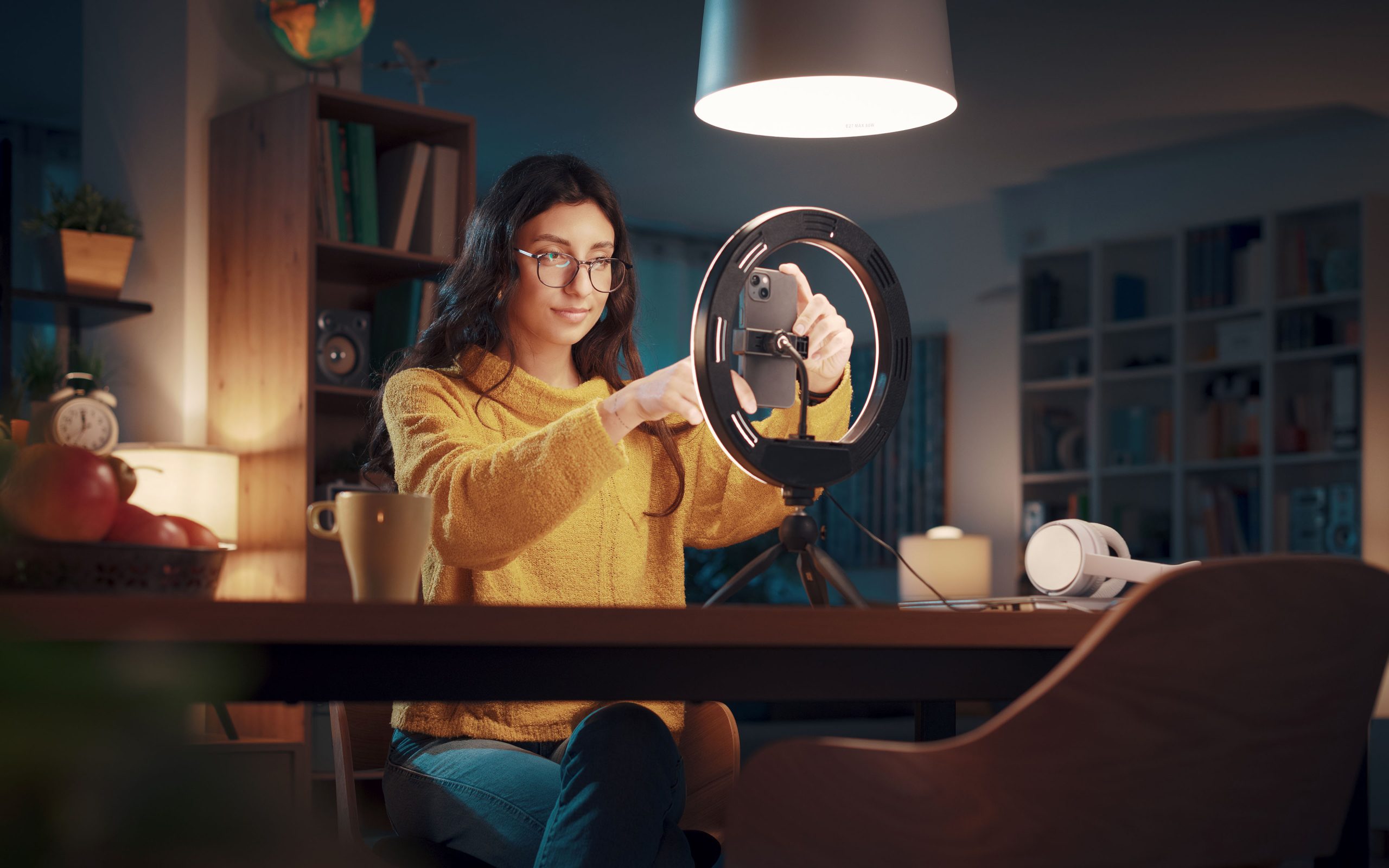When it comes to social media content, video and short-form video in particular is huge.
It’s a competitive landscape and each passing year it’s harder for creators to stand out. Everybody is looking for tactics that will give them an advantage. Thus, it’s surprising how many people overlook tweaking their filming habits to boost their sound quality.
Authentic content that’s in the moment is capturing both people’s attention and imagination right now. Sometimes you need to put production concerns aside and just hit record before the moment is gone. Nevertheless, if speech is a key component in your video it needs to be clear and easy to understand. Otherwise, the point of the video will whiz over your audience’s head or they’ll keep scrolling.
Why Exactly Are Internal Mics Mediocre or Even Poor?
When you consider how tiny the components of a smartphone are, it’s astonishing that phones perform as well as they do. The quest to make everything small brings compromises, and microphones are no exception.
The mic in your smartphone is a tiny electret condenser. Condenser mics have been around for a very long time. E.C. Wente invented it in 1916 for Bell Labs.
If you were to get a standalone condenser mic today the choices in brands and styles are vast. If you break it down in terms of the size of the diaphragm inside the mics, it gets much simpler.
There are small, medium, and large diaphragm condenser mics. Each has its pros and cons. However, in terms of sound, it’s notable that large diaphragm condenser mics give you a big, rich sound.
This is where internal mics in phones struggle the most: bass. They do capture the mid frequencies and highs of the human voice adequately with proper technique. Ultimately, speech without post-processing that was recorded with a phone sounds flat. And that can make it challenging for your audience to understand what’s being said.

You Can Easily Understand the Speech in Your Video, But Can Your Audience?
Creators are biased towards the perception of clarity in the speech in their videos.
In particular, if you’re the main person speaking, you know exactly what you said. Thus, even if the audio is less than adequate for others, you might not notice the problem.
Your audience on the other hand might struggle to understand certain words or even sections of your speech. Of course, captions help with this. However, you never want to rely on captions to make up for issues in the clarity of your audio.
A study by USC and the Australian National University found that audio quality influences whether people trust the information and whether they trust the speaker. Establishing trust is a key component of success, particularly in online communication.
Record Voice-overs in Post-Production
There’s plenty to focus on when filming video such as lighting, angle of the shot, and panning. Sometimes it’s best to eliminate on-camera speech.
Short-form videos with voice-overs that show you what’s being talked about rather than focusing on the creator have gained a lot of popularity. It’s a video format that is bound to level up your audio whenever you use it.
This way you can edit your video and add voice-overs that fit perfectly afterwards.
Recording your voice-over separately allows you to take the time to set up a professional microphone, and get your sound and performance just right.
Even if you use the internal mic on your phone for a quick voice-over, you can position your phone just right in relation to your mouth to maximize clarity. In this circumstance, your internal mic will perform about as well as it possibly can.




Use a High-Quality Microphone
Video podcasts that emulate the radio station environment tend to have solid audio. That’s because so much of getting high-quality sound is simply choosing the right microphone.
Many people don’t use a microphone with their smartphone because they think set up will be a hassle or slow them down. The fact is, you can simply attach an adapter to any USB microphone and then plug it into your phone. It’ll work like magic when you launch your camera to shoot video.
Thus, any time speech is a key factor in your video, consider using either a USB mic or a lavalier mic. And if you want to ditch the cord, there are wireless lavalier solutions that do just that.
Even when you’re filming on the fly, form the habit of considering your alternatives when it comes to capturing the audio. A lot of creators use their internal mic due to habit. So, if find yourself doing the same, replace that habit with packing a mic and reaching for it when filming.
Conclusion
The internal mic on your phone allows you to create without planning in terms of production. However, for a person who takes content creation seriously, it should be a last resort.
With internal mics too much can go wrong: from noisy environments that make speech hard to understand to audio levels that are too low in volume for social media without post-processing.
Using an external mic in your videos will not only make speech easy to grasp for your audience, but it’ll also make it grease the wheels towards gaining their trust.
